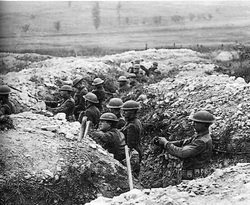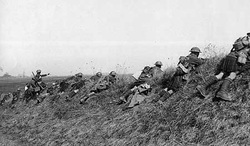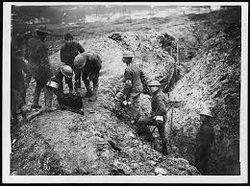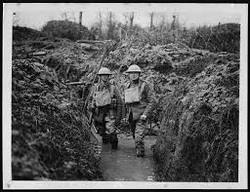Four Different Types of Trenches
Front-line Trench

This type of trench was also known as the firing-and-attack trench. It was located 50 yards to 1 mile from the German's front trench. This trench was not dug in a straight line, but in a way so that it followed natural features, such as rivers, to create a good defense or view of the enemy lines. At this firing and attacking trench, thousands of soldiers became casualities in orfer to give a cover. This trench is dug in sections so if a shell exploded in one of these sections, or an enemy invaded one, only that section would be affected.
Support Trench

This trench was several hundred yards behind the front-line trench. Men and supplies that could be used to immeidately assist those in the front-line trench were kept here.
Reserve Trench

The reserve trench was several hundred yards behind the support trench. This trench held more men and supplies for if the front trench was invaded or overrun.
Communication Trench

These trenches connected the front-line, support, and reserve trenches. Communication trenches enabled the movement of messages, supplies, and men through the other three trenches. Some underground paths connected the gun emplacements and bunkers with the communication trenches.
*these types were used by the allies fighting against the Germans
